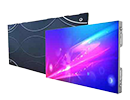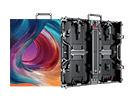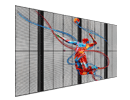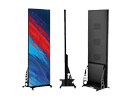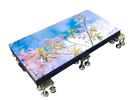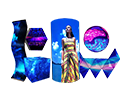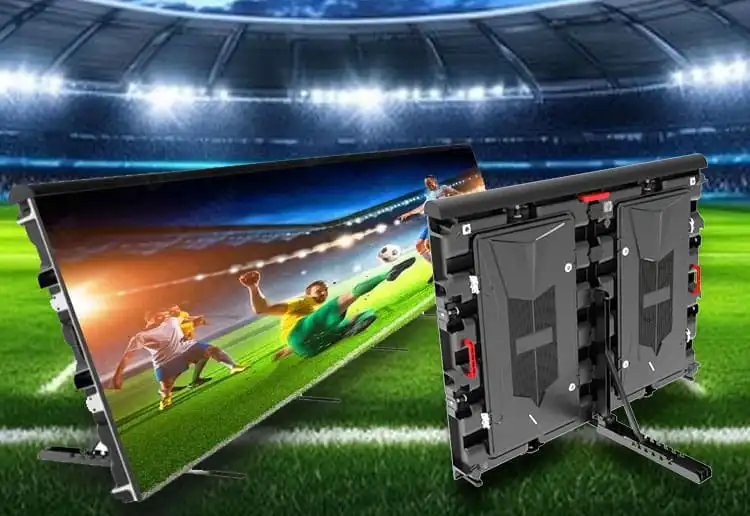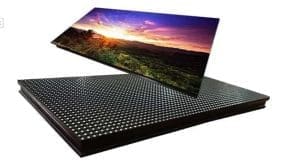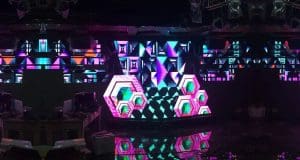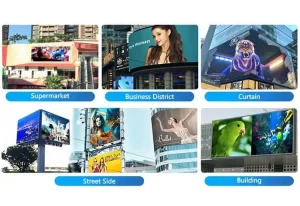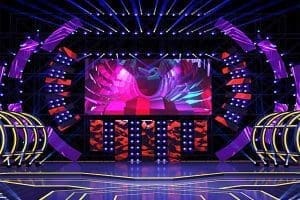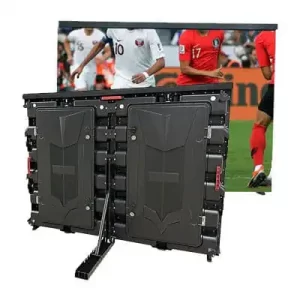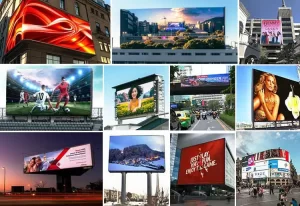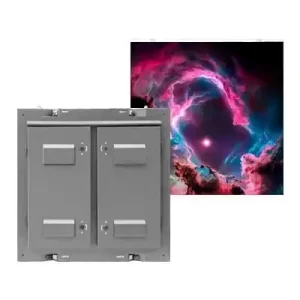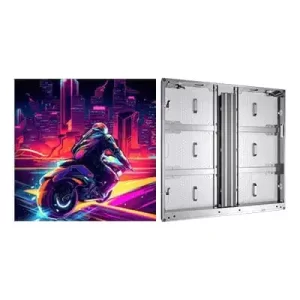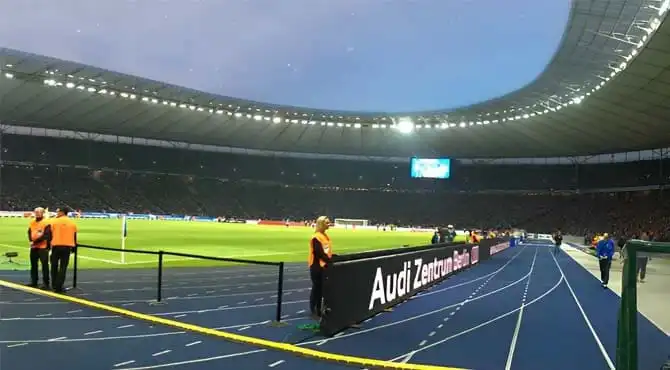
A sports competition LED display screen is an essential tool for live events, providing real-time updates, scores, advertisements, and dynamic visuals to enhance the spectator experience. These screens are commonly used in stadiums, arenas, and sports venues for various events, including football, basketball, cricket, and athletics.
This guide covers the features, benefits, applications, costs, and technical considerations for LED sports displays to help you make an informed decision.
What is a Sports Competition LED Display Screen?
A sports LED display screen is a high-tech digital signage solution designed to:
- Display scores and statistics in real time.
- Stream live or pre-recorded video content.
- Advertise sponsors and brands.
- Enhance audience engagement with dynamic visuals and instant replays.
These screens are built for indoor and outdoor venues, offering high brightness, durability, and seamless performance, even in challenging conditions.
Types of Sports LED Display Screens
1. Scoreboard LED Screens
- Displays real-time scores, timers, and statistics.
- Common in football, basketball, and cricket stadiums.
2. Perimeter LED Screens
- Horizontal LED panels placed around the field or court.
- Used for dynamic advertising and brand promotions during live matches.
3. Video Walls
- Large LED screens for live streaming, instant replays, and close-up shots.
- Positioned in prominent locations for maximum visibility.
4. Ribbon LED Displays
- Narrow, curved LED panels installed on stadium facades or around seating areas.
- Used for displaying scrolling text, advertisements, and updates.
5. Portable LED Screens
- Mobile LED screens used for temporary sports events, such as marathons or amateur competitions.
Key Features of Sports LED Screens
1. High Brightness
- Outdoor sports LED displays offer 5,000–8,000 nits of brightness, ensuring clarity in direct sunlight.
- Indoor screens provide 800–1,200 nits, optimized for controlled lighting conditions.
2. High Refresh Rate
- Refresh rates of ≥3840 Hz ensure smooth visuals, especially for live broadcasts and slow-motion replays.
3. Wide Viewing Angle
- 140°–160° viewing angles provide excellent visibility from all parts of the venue.
4. Weatherproof Design
- Outdoor screens are IP65-rated, protecting against rain, dust, and extreme temperatures.
- Durable materials prevent damage from physical impacts, such as stray balls or debris.
5. Seamless Modular Design
- Modular panels create large, seamless displays without visible gaps.
- Easy to install, expand, or maintain.
6. Real-Time Data Integration
- Syncs with scoring systems and live broadcast feeds for instant updates and accurate information.
7. Energy Efficiency
- Modern LED technology reduces power consumption, lowering operational costs for stadiums and event organizers.
Applications of Sports LED Display Screens
1. Stadiums and Arenas
- Display scores, replays, and player statistics during live matches.
- Used for sponsor advertisements and crowd engagement.
2. Sports Events and Tournaments
- Provide live video feeds and updates for outdoor events like marathons, cycling races, and track-and-field competitions.
3. Training Facilities
- Real-time performance tracking and playback for coaching and analysis.
4. Multi-Purpose Venues
- Adjustable for different sports, concerts, and non-sports events.
5. Fan Zones
- Deployed in public spaces to stream live matches, creating a shared viewing experience for fans.
Technical Specifications of Sports LED Screens
| Feature | Details |
|---|---|
| Pixel Pitch | P4, P6, P8, P10 (depends on viewing distance). |
| Brightness | 5,000–8,000 nits (outdoor) / 800–1,200 nits (indoor). |
| Refresh Rate | ≥3840 Hz for smooth visuals. |
| Weatherproof Rating | IP65 (outdoor) / IP54 (indoor). |
| Viewing Angle | 140°–160° wide-angle visibility. |
| Lifespan | 50,000–100,000 hours. |
| Power Consumption | 200–800 W/m² (varies by pixel pitch). |
| Control System | Syncs with video processors, scoreboards, and live feeds. |
Advantages of Sports LED Displays
1. Enhanced Fan Experience
- Provide real-time updates, instant replays, and detailed statistics to keep the audience engaged.
- Create a more immersive and enjoyable atmosphere.
2. Revenue Generation
- Perimeter LED screens and video walls offer prime advertising space for sponsors, increasing revenue for event organizers.
3. Versatility
- Easily adaptable for different sports, events, and venues.
- Can display live feeds, advertisements, animations, and text simultaneously.
4. Durability and Reliability
- Built to withstand intense weather conditions and physical impacts, ensuring consistent performance.
5. Easy Maintenance
- Modular designs make it easy to replace or repair individual panels without disrupting the whole display.
6. Scalability
- Can be customized to fit venues of any size, from small training facilities to large stadiums.
Costs of Sports Competition LED Screens
The cost of a sports LED display depends on factors such as screen size, pixel pitch, brightness, and installation complexity. Below is a cost breakdown:
1. Cost Per Square Meter
| Pixel Pitch | Recommended Use | Cost per m² |
|---|---|---|
| P4 | High-resolution indoor displays | $2,500–$3,500 |
| P6 | Medium-distance viewing | $2,000–$3,000 |
| P8 | Outdoor long-distance viewing | $1,800–$2,500 |
| P10 | Large-scale outdoor displays | $1,500–$2,000 |
2. Example Costs for Common Configurations
| Screen Type | Size | Estimated Cost |
|---|---|---|
| Scoreboard | 20 m² | $40,000–$70,000 |
| Perimeter Screens | 50 m x 1 m | $75,000–$150,000 |
| Video Wall | 100 m² | $200,000–$350,000+ |
| Portable Screens | 10 m² | $20,000–$40,000 |
3. Additional Costs
- Video Processor: $2,000–$10,000 for content management.
- Installation: $5,000–$20,000 depending on complexity.
- Steel Support Structure: $10,000–$50,000 for large stadium installations.
How to Choose the Right Sports LED Display
1. Consider Viewing Distance
- P4-P6: Ideal for indoor arenas or close viewing.
- P8-P10: Suitable for large outdoor stadiums with long-distance viewing.
2. Assess Brightness Needs
- Outdoor screens should offer ≥5,000 nits to ensure visibility in sunlight.
- Indoor screens can operate with 800–1,200 nits.
3. Ensure Weatherproofing
- Look for IP65-rated screens for outdoor installations to protect against rain, dust, and extreme temperatures.
4. Plan for Content Management
- Invest in a reliable control system to manage multiple inputs, including live feeds, advertisements, and scoreboards.
5. Think About Scalability
- Choose modular screens that can be expanded or reconfigured for future needs.
Successful Applications of Sports LED Screens
- Wembley Stadium (UK): Large LED screens display live matches, scores, and sponsor advertisements, enhancing the fan experience.
- American Football Stadiums (USA): Massive video walls provide real-time replays and crowd interactions.
- Olympic Games: Portable and fixed LED screens are used for live streaming and event updates across venues.
- Cricket Stadiums (India): Perimeter LED displays generate revenue through high-visibility advertising.

